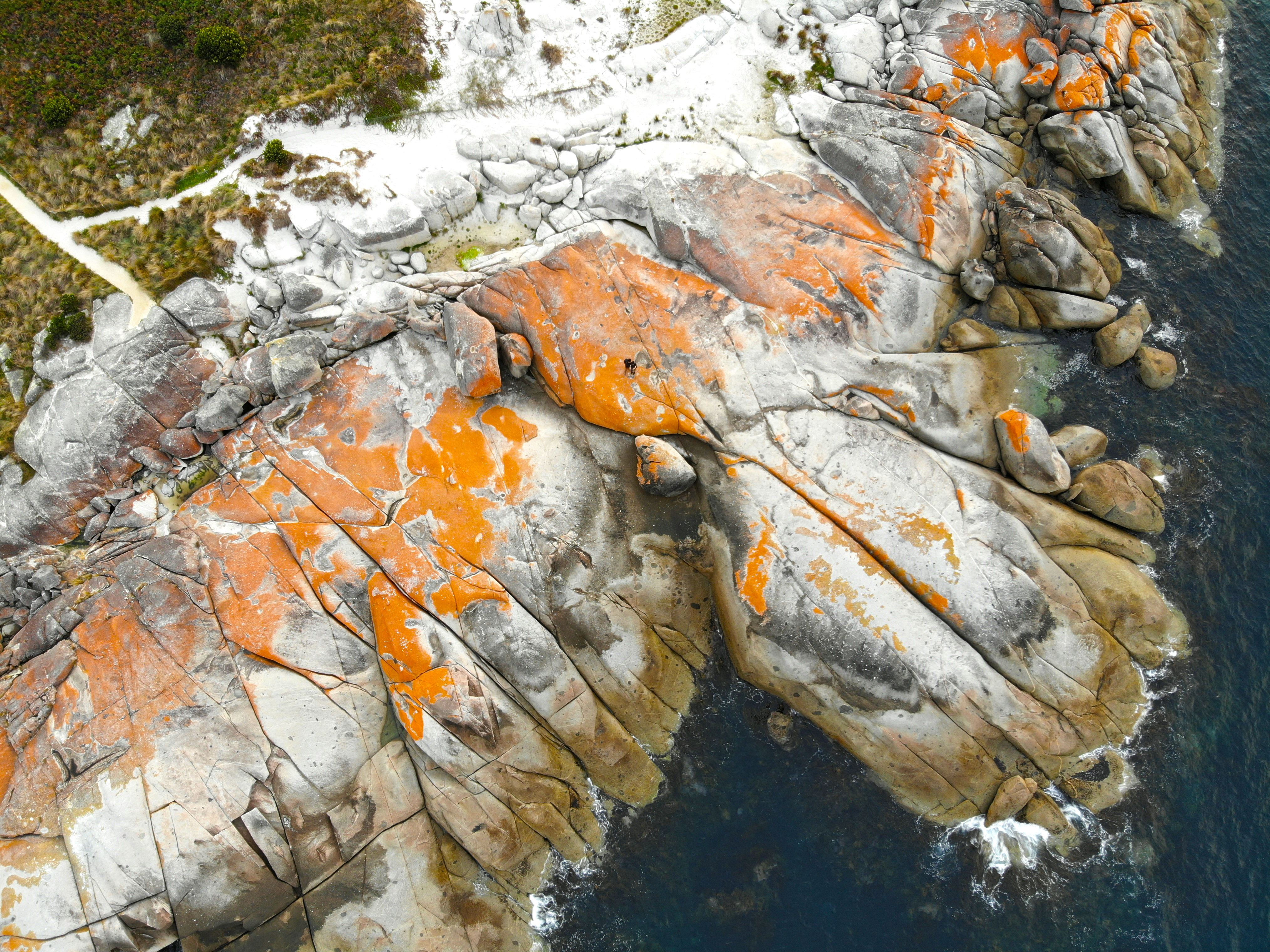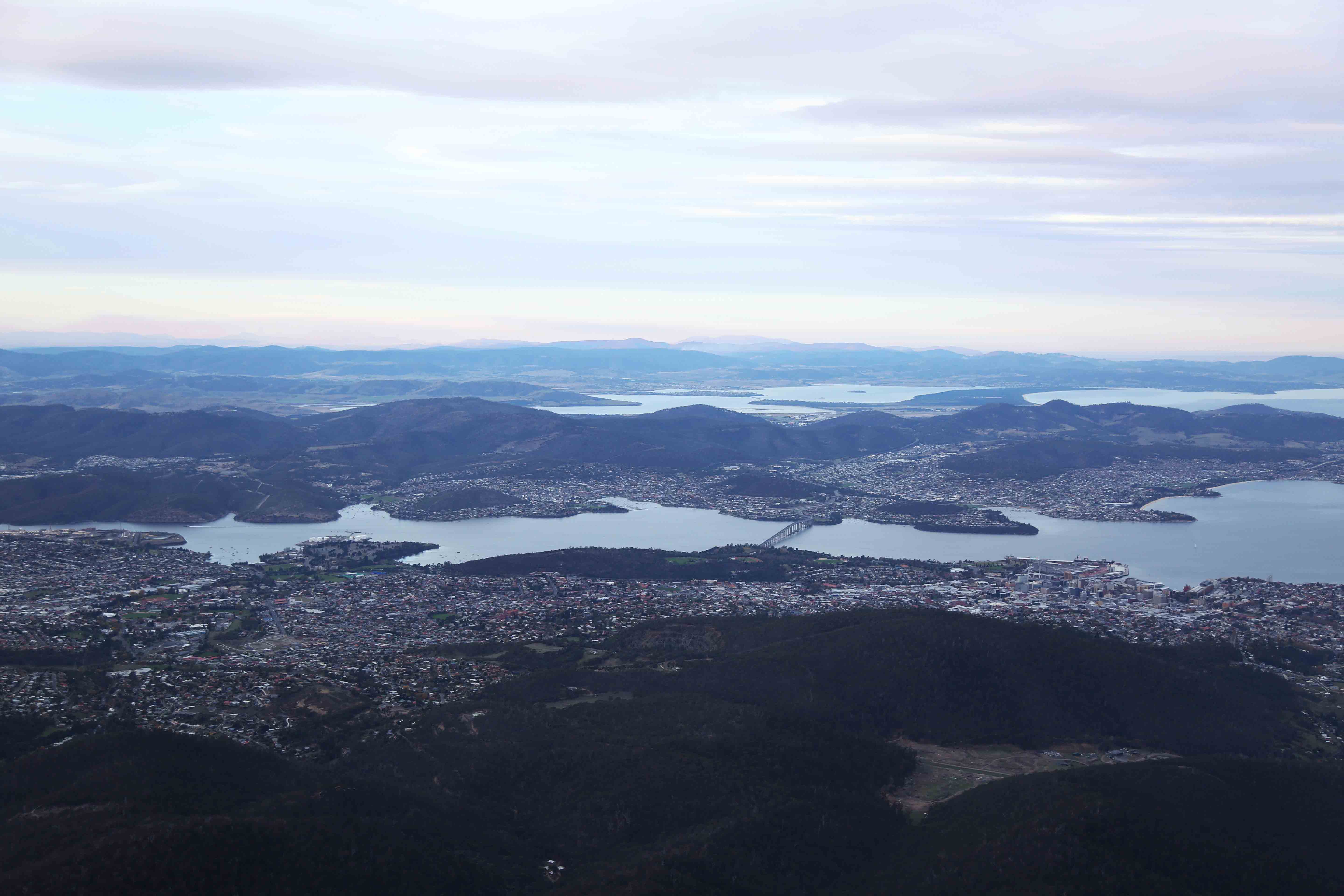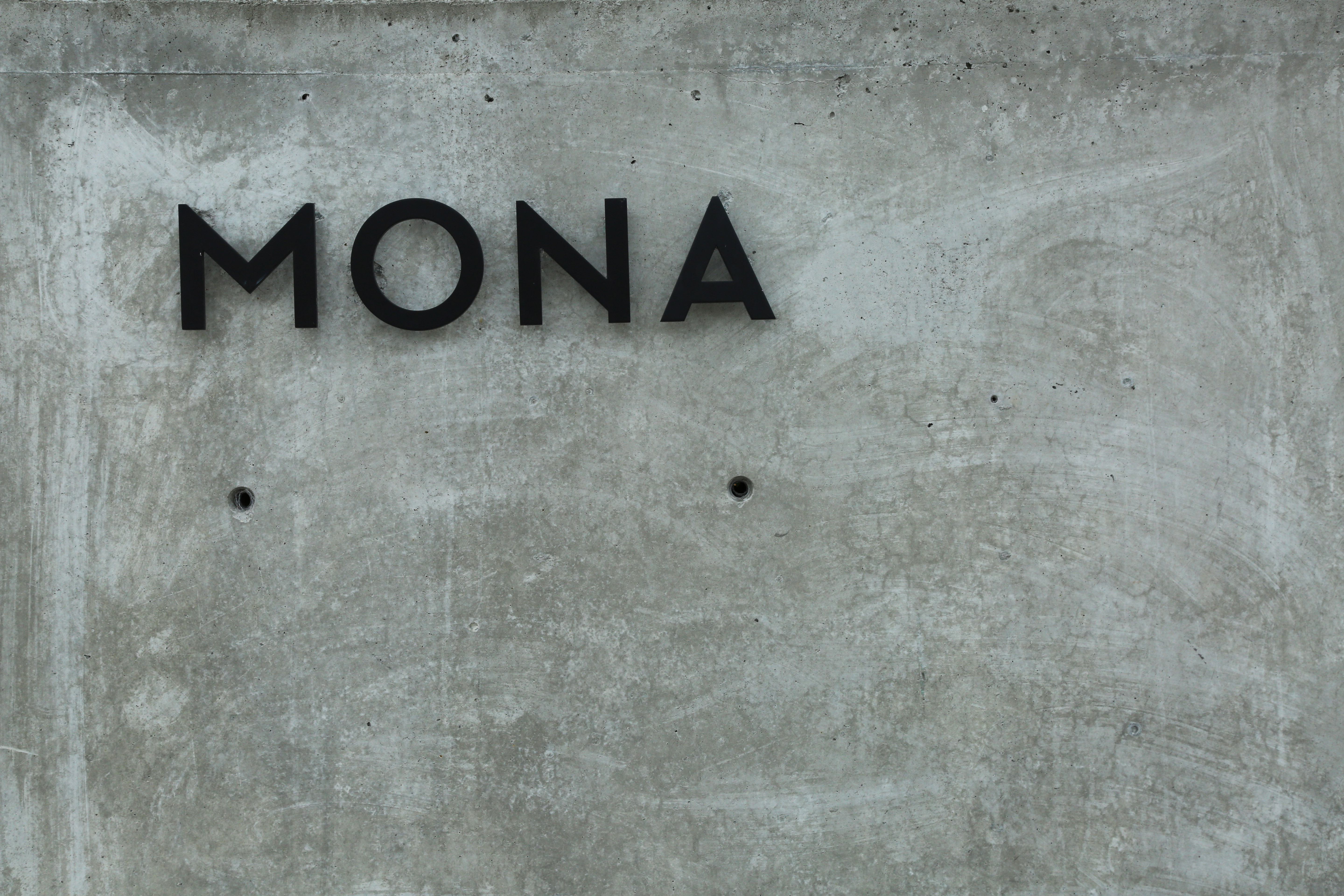It is fair to say that for the both of us, our trip to New Zealand was the best of our lives. Sure, our itinerary led us to the most beautiful mountains and lakes we had ever seen, however it is how we experienced the country which left us with magical memories that we will cherish for the rest of our lives. This “how” is a camper van.
Neither of us had travelled this way for an extended period of time before but we can now say that it won’t be the last. The South Island of NZ is truly catered for van life with plenty of campsites which are fairly priced ($13 AUD per night) and even slightly more expensive ones with power points, showers and laundry facilities. If they’re a bit out of your budget, there are many freedom camping areas where you can just park your van next to a forest, sleep and forget about it. We went for the popular Jucy Van and instantly felt part of the Jucy community. Jucy campers always acknowledge each other on the road so we got to say hello to a lot of strangers! It felt very liberating to travel in our “home” and always be part of nature, for example, brushing our teeth looking at this:

and realising how little we needed to have a meaningful and beautiful travel experience. We also realised that visiting New Zealand in a van is actually an incredibly romantic thing to do (out you go Paris, shoo!). Experiencing nature in such an intimate way made us connect with each other as a couple on a new level which, in my opinion, is much more romantic than being in a fancy hotel overlooking the Eiffel Tower.
Before we tell you where we think you should consider going, here’s a small video of some of the places we visited and talk about in this blog. It was shot with a Canon 5D Mark iii and a DJI Mavic Air. We hope you enjoy 🙂
…
…
Top destinations in the South Island
Queenstown: is the adrenaline capital of the world and you should absolutely visit it. It’s a very charming town that never sleeps. Shops and restaurants are open till early in the a.m and the main street always seems to be buzzing, mostly thanks to Fergburger, the best burger joint in New Zealand (dare I say the world?). Queenstown is on the edge of Lake Wakatipu, one of the biggest lakes of the South Island. It’s such a peaceful and beautiful place with plenty of hikes to do and campsites overlooking the lake.


What we really enjoyed in Queenstown was all the adventurous activities you can do there. I was not psychologically ready for skydiving which the town is famous for (and Chinmay has already done it elsewhere), however I was pretty open to other adrenaline filled experiences that were a little closer to the ground. We did the Nevis Swing which was nerve wracking but so much fun. Chinmay did mountain biking near the Skyline Gondola which he really loved. We did canyoning which was my absolute favourite and would recommend to anyone who likes being in water. On our last day we rode the Skyline Luges which was obviously less dramatic than the rest but we enjoyed ourselves and giggled like kids. Here’s a short video shot with a GoPro which includes some of the fun activities we did in Queenstown:
Milford Sound: is an absolute ripper (practicing my Ozzy slang here)! Milford Sound is a world heritage site and honestly the most beautiful place we saw during our trip. There are a few options to see the famous fiord including hiking, by helicopter and by cruise. We chose the latter since we wanted to get in and amongst the mountains and see the numerous waterfalls. On the morning of our cruise adventure, we woke up to a bright and shining sun. We were told we were very lucky as it was the first time in months that the fiord wasn’t drenched in rain.

Going on that cruise was a truly magical experience. The waterfalls were beautiful, the whole landscape looked as if it had been carved by a surrealist artist and we even got to see some teenage seals resting on a rock. We didn’t see any but if you’re lucky you might spot small penguins. We met fellow travellers who told us that they had done the cruise while it was cloudy and raining and that it was gorgeous as well. Going to Milford Sound is well worth the long drive from Queenstown and if we had to pick only one spot to go back to in New Zealand, this would definitely be it!


Fiordland National Park: is home to Milford Sound, the cute and lovely town of Te Anau, and some of the best hikes that the South Island has to offer. To be honest, just driving around Fiordland is enough to see spectacular views however we like to hike so we trekked along the Key Summit trail. We initially planned a couple of other hikes but the weather wasn’t in our favour – safety above all!



The Key Summit trail isn’t hard at all and will probably take you between 3 to 4 hours return at a good pace (it took us around 5 hours but we took more breaks than the average person). It’s a beautiful hike and the views are very rewarding at the top. We got to see the below river by parking our van on the side of the main road so you’re still a winner if hiking isn’t your cup of tea.

Lake Wanaka: is a beautiful lake and its township is very charming with lots of great restaurants overlooking the lake. It is also very close to another big and beautiful lake, Lake Hawea. There are many popular hikes around the area with pretty majestic views, the most popular being Roy’s Peak Trail. We had seen a lot of photos of Roy’s Peak and thought we might give it a go but at the time we were in New Zealand, it was closed for lambing. Some people still go despite all the signs and warnings. The fact that some these folk aren’t respectful to the owners of the private land in which the path crosses (who, request it to be closed only 1 month a year) goes over my head. We decided to do the Isthmus Peak Trail instead.


Little did we know that it was going to be the hardest hike of our lives. It was rough, steep and never ending. Chinmay, who has hiked Kilimanjaro, said that it was one of the toughest trail he’d seen. I honestly wanted to give up every 10 minutes and had to push myself mentally to finish it. It must’ve taken us 6 hours to reach the summit and what a spectacular view it was. Isthmus Peak stands in the middle of Lake Wanaka and Lake Hawea, so each side of the peak overlooked a lake. It was the type of hike that I was so happy and proud to have done, I even thought it was well worth all the sweat and tears – but I would probably never do it again. I would still recommend it for all the experienced hikers out there who don’t mind to trade a very tough work out for one of the most stunning views you’ll ever see.
Mount Cook/Aoraki: otherwise known as the highest mountain in New Zealand. North of Lake Hawea, you will find yet another beautiful lake: Lake Pukaki. The water of this lake is so bright and turquoise in colour due to glacier flour – it almost looks unreal (you can see a shot of it in our drone video). While it’s quite an impressive body of water, the main attraction it has to offer is the location of its source: Mount Cook or Aoraki. Again, you can take a helicopter to see the mountain and its surrounding glacier but we opted for a quick and simple hike as we were still recovering from the Isthmus Peak Trail. The Hooker Valley Trail is mostly flat and won’t take you more than 3 hours to complete. All along, the path crosses and follows a beautiful stream of water that sneaks in between mountains – it’s stunning and effortless. At the end of the trail you end up gazing directly at Mount Cook, with a small crater-like opening at its foot, filled with water and small icebergs. This trail is definitely not to be missed!



Lake Tekapo: is known for having one of the clearest skies in the world and attracts a lot of star gazers (including us). The township is designed to reduce light pollution and it sure would be pretty magical if most towns and cities in the world would follow its footsteps. We were really looking forward to Tekapo since we love star gazing but unfortunately, the timing of our arrival was a bit off since the moon was almost full and was reflecting 10% of the sunlight – no Milky Way for us. We did however have an incredible time at our tour with Tekapo Star Gazing. The tour allowed us to watch nebulas and clusters through specialised telescopes and we ended in a hot pool, gazing at the stars whilst our guide told us old Maori tales. That’s about the only thing we’d recommend you do in Tekapo.

The Church Good Shepherd usually attracts a lot of tourists and sure, it looks cute in photos, but I wouldn’t kick a fuss about it – you won’t miss out on much if you don’t check it out. The Mount John observatory near Tekapo isn’t worthwhile either, in our opinion. There is an entry fee to drive up the hill on which it sits, and there is literally nothing to do except sit down for an overpriced coffee once you’re at the top.
Arthur’s Pass: is a route you will have to take if you’re going north of Tekapo. It’s beautiful drive and you can stop mid way to check out the Devils Punchbowl Waterfall which is quite a sight. You will also notice a lot more Kea birds in the area – they are fearless and quite naughty so don’t let them get too close to your belongings. There are only around 5,000 left and all are located in the South Island of New Zealand.


Hokitika & The Glow Worm Dell: was our next stop after Arthur’s Pass. Hokitika is quite small but very charming. The town has specialised over the years in the trade of sculpting jade in traditional Maori shapes. The streets are filled with jade and jewellery shops, in which you can also customise your own jade pendant. What interested us the most though was the Glow Worm Dell at the north entrance of the town. At night, the entire dell is filled with glow worms and it felt like we were walking amongst the stars. It was a magical experience, especially since neither of us had seen glow worms before.

Franz Josef & Fox Glaciers: are both breathtaking, I’m sure, and I could have told you a lot more about them if we had not been welcomed with terrible rain at our arrival. We had a Heli Hike booked in Franz Josef which had to be cancelled two days in a row due to poor weather. We did manage to squeeze in the Franz Josef Glacier walk in between two downpours. It’s an easy and short hike that leads you to the bottom of the glacier, well at least it did a few years ago. Unfortunately, the glacier has been receding at an alarming rate since 2008. We did however get to see part of the glacier, even though clouds were covering half of it. We had to stay indoors most of the time so we visited the Kiwi bird sanctuary in Franz Josef, which was really informative and interactive. The Fox Glacier region is supposed to have quite a few nice hikes – we were only able to do the Lake Matheson Walk which was really beautiful and didn’t take us more than an hour to complete. We hope you have better luck than us with the glaciers!

Haast Pass: was the most beautiful drive of the South Island for us. It starts South of Fox Glacier and continues down to Wanaka. Travelling through Haast Pass was a magical experience, the nature in this National Park is sensational. There are countless waterfalls, the streams of water along the road are bright turquoise in colour and the mountains have the most beautiful vegetation growing on them. Unfortunately, we don’t have any pictures to show for, as it was raining pretty hard while we were driving. The weather did calm down towards the end and we were able to see the famous Blue Pools which were sensational. It was perhaps a bit too cold to go for a swim even though the blue water was very inviting.

…
New Zealand reminded us of how profound travelling close to nature truly is. There is something extremely humbling about being at the mercy of nature, hoping that each day as we wake up, it will be kind to us. It was the trip of a lifetime for us, one that we will never forget and we cannot wait to explore the North Island next.



…
…
Some things you should know…
- Drones : filming with a drone in the South Island of New Zealand can be a bit challenging as there are many rules and restrictions enforced by the local government in order to protect the pristine nature and wildlife. You need to apply for permits, which will cost you around $50 NZD per permit, as well as detailing the areas you want to film, how many times you want to film them and at what hour of the day. I know, it sounds complicated but we recommend you do it. We saw a few tourists flying their drones without a license and we hope they didn’t get caught because the fine for illegally flying a drone is pretty hefty and rangers are everywhere, checking the national parks regularly.
- Sandflies: they are a nightmare, period. We didn’t even know they existed before going to New Zealand. Sandflies are little flies that will land on your skin, bite you (it pinches alright!) and you are left with a mark that itches for days… and I mean for way longer than a mosquito bite. Insect repellant helps a bit, but you’ll still get bitten so if you’re travelling outside of the winter season, be prepared!
- Sheep: contrary to popular belief, not all parts of the South Island are drop dead gorgeous. There are vast areas which are populated with New Zealand’s well known ubiquitous sheep till the eyes can see. These will be very boring drives (for example, Queenstown to Curio Bay) – for the first time in my life I understood why counting sheep makes one sleep. What is sad, is that a lot of deforestation is happening in order to create more grazing land for sheep and cattle. It might help the farming and agriculture economy but when you’re driving in a national park and you see trees nearby being removed for sheep, it’s pretty tragic.
- Maori culture: we were curious and keen to learn more about Maori culture during our trip but this was a bit hard to come by on the South Island. European culture is pretty much dominant in all the places we visited. Museums are full of “First Settlers” tales and objects, which is interesting in its own way, but not the information we had hoped to gain.
…
Follow us on instagram to keep up with our adventures. If you have any questions or queries about New Zealand, don’t hesitate to leave a comment or contact us and we’ll try to help as much as we can







































